-
 Bitcoin
Bitcoin $108,165.4587
0.78% -
 Ethereum
Ethereum $2,456.3517
1.15% -
 Tether USDt
Tether USDt $1.0003
0.00% -
 XRP
XRP $2.1934
0.05% -
 BNB
BNB $650.0935
0.52% -
 Solana
Solana $151.3905
2.69% -
 USDC
USDC $0.9998
0.00% -
 TRON
TRON $0.2751
-0.32% -
 Dogecoin
Dogecoin $0.1640
0.87% -
 Cardano
Cardano $0.5631
0.57% -
 Hyperliquid
Hyperliquid $38.7115
4.69% -
 Bitcoin Cash
Bitcoin Cash $493.1868
-0.39% -
 Sui
Sui $2.8217
3.61% -
 Chainlink
Chainlink $13.3994
2.08% -
 UNUS SED LEO
UNUS SED LEO $9.1632
0.94% -
 Avalanche
Avalanche $18.0318
1.97% -
 Stellar
Stellar $0.2388
0.35% -
 Toncoin
Toncoin $2.8763
1.41% -
 Shiba Inu
Shiba Inu $0.0...01160
1.59% -
 Litecoin
Litecoin $86.6393
1.29% -
 Hedera
Hedera $0.1485
0.16% -
 Monero
Monero $315.7948
1.56% -
 Polkadot
Polkadot $3.4240
1.88% -
 Bitget Token
Bitget Token $4.6314
-0.44% -
 Dai
Dai $0.9998
-0.01% -
 Ethena USDe
Ethena USDe $1.0002
-0.01% -
 Uniswap
Uniswap $7.2110
2.59% -
 Aave
Aave $270.6087
6.07% -
 Pi
Pi $0.5350
0.52% -
 Pepe
Pepe $0.0...09545
1.26%
What is the difference between Bybit leverage and contracts? Which one is more suitable for short-term trading?
Bybit offers leverage to amplify trading positions and contracts for buying/selling assets at set prices, both useful for short-term trading strategies.
May 08, 2025 at 11:00 am
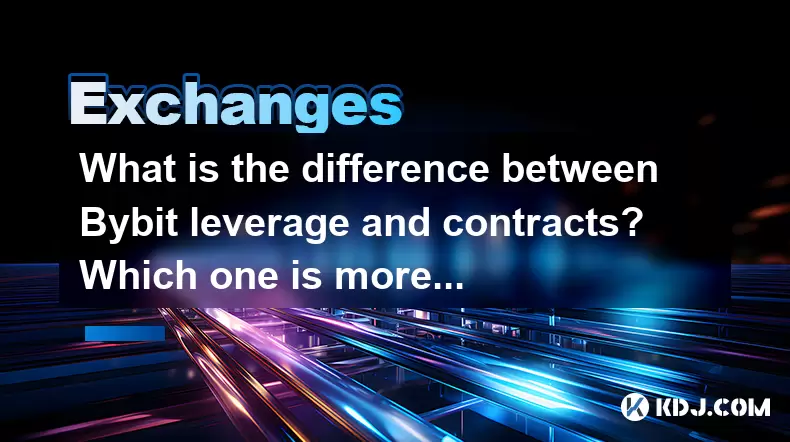
Introduction to Bybit Leverage and Contracts
Bybit is a popular cryptocurrency exchange known for its futures trading capabilities. Two of the key features offered by Bybit are leverage and contracts. Understanding the difference between these two is crucial for traders, especially those interested in short-term trading. Leverage allows traders to amplify their trading position beyond their initial capital, while contracts refer to the standardized agreements to buy or sell an asset at a predetermined price. In this article, we will explore the differences between Bybit leverage and contracts and determine which is more suitable for short-term trading.
Understanding Bybit Leverage
Leverage on Bybit is a tool that allows traders to increase their exposure to the market with a smaller initial investment. The leverage ratio determines how much a trader can borrow against their initial margin. For example, with a 100x leverage, a trader can control a position 100 times larger than their initial capital. This can significantly amplify both potential profits and losses.
To use leverage on Bybit, follow these steps:
- Log into your Bybit account.
- Navigate to the futures trading section.
- Select the cryptocurrency pair you want to trade.
- Choose your leverage ratio from the available options.
- Enter the amount you want to trade and confirm the order.
It's important to note that while leverage can increase potential returns, it also increases the risk of significant losses. Traders must manage their positions carefully and use risk management tools like stop-loss orders.
Understanding Bybit Contracts
Bybit offers various types of contracts, including inverse perpetual contracts and USDT perpetual contracts. Contracts are agreements to buy or sell a specific amount of a cryptocurrency at a future date at a price agreed upon today. The key difference between inverse and USDT perpetual contracts lies in the settlement currency and the way they are priced.
Inverse perpetual contracts are settled in the underlying cryptocurrency, such as Bitcoin or Ethereum. For example, a Bitcoin inverse perpetual contract is settled in Bitcoin. USDT perpetual contracts, on the other hand, are settled in USDT, a stablecoin pegged to the US dollar.
To trade contracts on Bybit, follow these steps:
- Log into your Bybit account.
- Go to the futures trading section.
- Choose the type of contract you want to trade (inverse or USDT perpetual).
- Select the cryptocurrency pair.
- Enter the amount and price at which you want to trade.
- Confirm the order.
Contracts allow traders to speculate on the price movements of cryptocurrencies without owning the underlying asset. They are popular among traders looking to hedge their positions or take advantage of short-term price movements.
Comparing Bybit Leverage and Contracts
While both leverage and contracts are essential tools for traders on Bybit, they serve different purposes and have different implications for trading strategies.
Leverage is primarily a tool to increase the size of a trading position. It does not change the nature of the asset being traded but amplifies the trader's exposure to market movements. Leverage can be applied to both spot and futures trading, but it is most commonly used in futures trading due to the higher potential returns and risks.
Contracts, on the other hand, are specific financial instruments that allow traders to buy or sell an asset at a future date. Contracts come with predefined terms, such as the contract size, expiration date, and settlement currency. They are designed to facilitate trading and hedging strategies without the need for physical delivery of the underlying asset.
Suitability for Short-Term Trading
When it comes to short-term trading, both leverage and contracts can be useful, but they cater to different aspects of trading strategies.
Leverage is particularly appealing for short-term traders looking to capitalize on small price movements. By using high leverage, traders can open larger positions with less capital, potentially leading to higher profits if the market moves in their favor. However, the increased risk of significant losses makes it crucial for traders to have a solid risk management strategy in place.
Contracts, specifically perpetual contracts, are also suitable for short-term trading. Perpetual contracts do not have an expiration date, allowing traders to hold positions indefinitely. This feature makes them ideal for short-term traders who want to take advantage of intraday price movements without worrying about contract expiration. Additionally, the ability to go long or short on contracts provides flexibility in trading strategies.
Choosing Between Leverage and Contracts for Short-Term Trading
For short-term trading, the choice between leverage and contracts depends on the trader's strategy and risk tolerance.
If a trader is focused on maximizing potential returns with a smaller initial investment, leverage might be the preferred choice. However, this comes with the caveat of increased risk, and traders must be prepared to manage their positions actively.
If a trader is more interested in flexibility and the ability to hedge positions, contracts might be more suitable. Perpetual contracts, in particular, offer the advantage of no expiration date, making them ideal for short-term trading strategies.
Ultimately, many short-term traders use a combination of leverage and contracts to optimize their trading strategies. By understanding the strengths and limitations of each tool, traders can make informed decisions that align with their trading goals and risk tolerance.
Frequently Asked Questions
Q: Can I use leverage on Bybit without trading contracts?
A: Yes, leverage can be used on Bybit for both spot and futures trading. However, it is most commonly used in futures trading due to the higher potential returns and risks associated with leveraged positions.
Q: What are the risks of using high leverage on Bybit?
A: High leverage increases the potential for both profits and losses. The main risk is that even small adverse price movements can result in significant losses, potentially leading to liquidation of the trader's position if the margin falls below the required level.
Q: How do I choose between inverse and USDT perpetual contracts on Bybit?
A: The choice between inverse and USDT perpetual contracts depends on your trading preferences and risk management strategy. Inverse perpetual contracts are settled in the underlying cryptocurrency, which can be beneficial if you want to hold the cryptocurrency. USDT perpetual contracts are settled in USDT, which can be more straightforward for managing profits and losses in a stablecoin.
Q: Can I switch between different leverage ratios during an open position on Bybit?
A: Yes, Bybit allows traders to adjust their leverage ratio during an open position. However, changing the leverage ratio can affect the margin requirements and the potential for liquidation, so it should be done with caution.
Disclaimer:info@kdj.com
The information provided is not trading advice. kdj.com does not assume any responsibility for any investments made based on the information provided in this article. Cryptocurrencies are highly volatile and it is highly recommended that you invest with caution after thorough research!
If you believe that the content used on this website infringes your copyright, please contact us immediately (info@kdj.com) and we will delete it promptly.
- Bitcoin: A Lifeline Against Authoritarian Regimes and a Strategic Asset?
- 2025-06-29 22:30:12
- Elementary, My Dear Collector: Sherlock Holmes 50p Coins on eBay!
- 2025-06-29 22:30:12
- New Coin Disappearing Fast: The Price Impact of Angry Pepe Fork
- 2025-06-29 22:35:12
- Tron vs. Dogecoin: A Cryptocurrency Showdown in 2025
- 2025-06-29 22:50:12
- Ethereum, DeFi, and Cryptocurrency: Navigating the Evolving Landscape
- 2025-06-29 23:07:14
- New Coins, Gaming, and Shiba Inu: What's Hot in the Crypto Space?
- 2025-06-29 23:11:47
Related knowledge
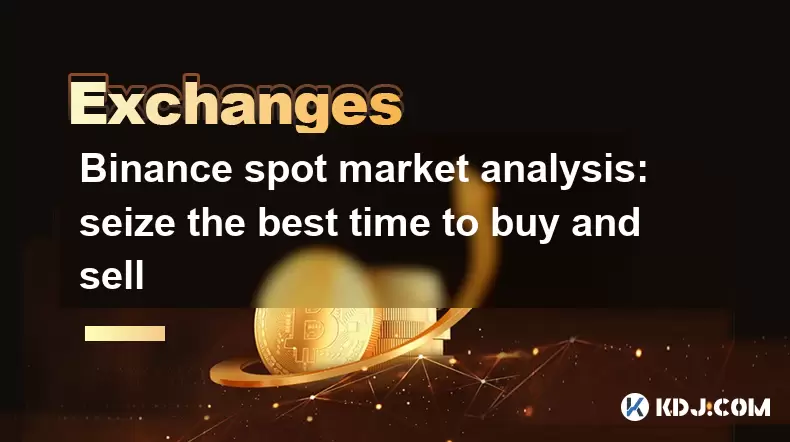
Binance spot market analysis: seize the best time to buy and sell
Jun 19,2025 at 04:56pm
Understanding the Binance Spot MarketThe Binance spot market is one of the most popular platforms for cryptocurrency trading globally. It allows users to trade digital assets at current market prices, making it essential for traders aiming to buy low and sell high. Unlike futures or margin trading, spot trading involves direct ownership of the asset aft...
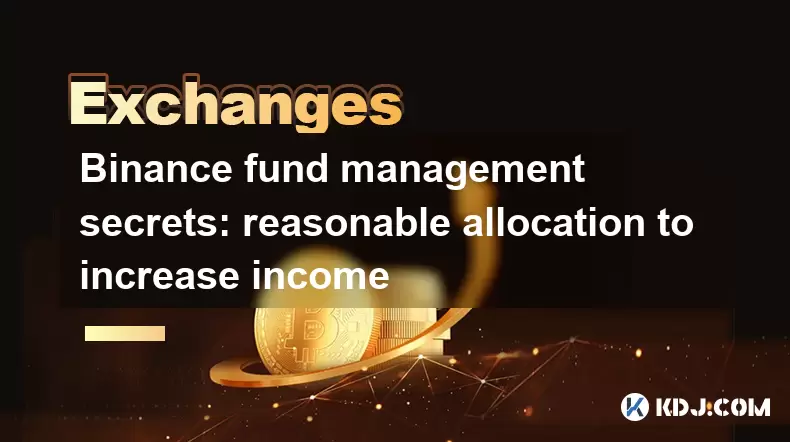
Binance fund management secrets: reasonable allocation to increase income
Jun 22,2025 at 02:29pm
Understanding Binance Fund ManagementBinance fund management involves strategic allocation of your cryptocurrency assets to optimize returns while managing risk. The key to successful fund management lies in understanding how different investment options on the Binance platform can be utilized to create a diversified portfolio. This includes spot tradin...
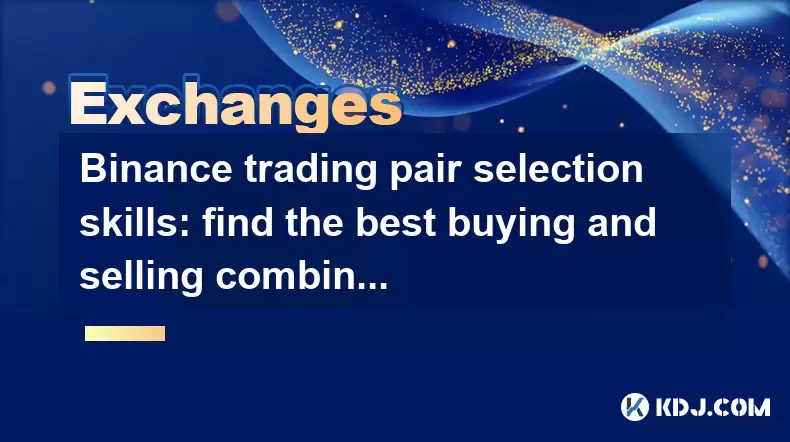
Binance trading pair selection skills: find the best buying and selling combination
Jun 23,2025 at 02:49am
Understanding the Basics of Trading Pairs on BinanceBefore diving into trading pair selection skills, it's essential to understand what a trading pair is. On Binance, a trading pair refers to two cryptocurrencies that can be traded against each other. For example, BTC/USDT means Bitcoin is being traded against Tether. Each trading pair has its own liqui...
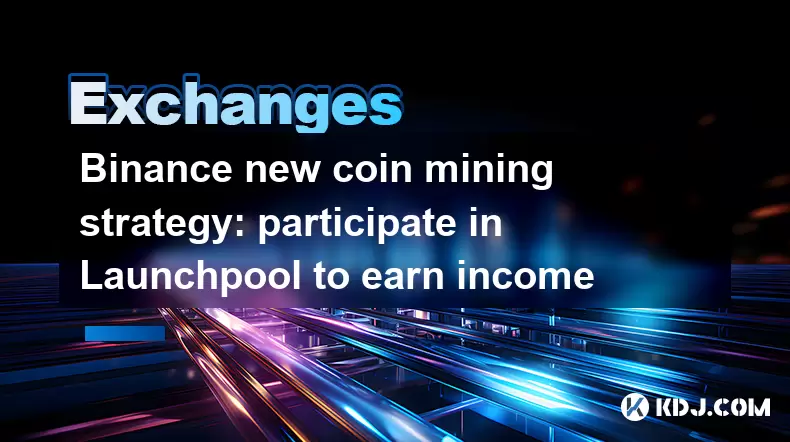
Binance new coin mining strategy: participate in Launchpool to earn income
Jun 23,2025 at 11:56am
What is Binance Launchpool and how does it work?Binance Launchpool is a feature introduced by the world’s largest cryptocurrency exchange, Binance, to allow users to earn new tokens through staking. This platform enables users to stake their existing cryptocurrencies (such as BNB, BUSD, or other supported assets) in exchange for newly launched tokens. T...
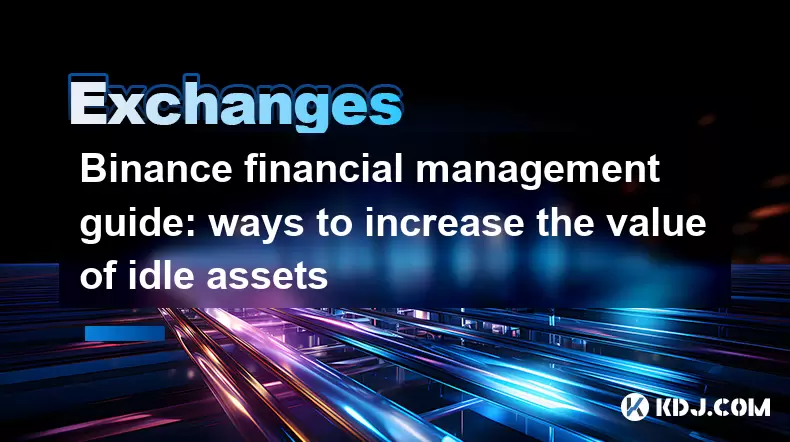
Binance financial management guide: ways to increase the value of idle assets
Jun 19,2025 at 11:22pm
Understanding Idle Assets in the Cryptocurrency SpaceIn the fast-paced world of cryptocurrency, idle assets refer to digital currencies that are not actively being used for trading, staking, or yield farming. Holding these funds in a wallet without utilizing them means missing out on potential growth opportunities. Binance, as one of the leading platfor...
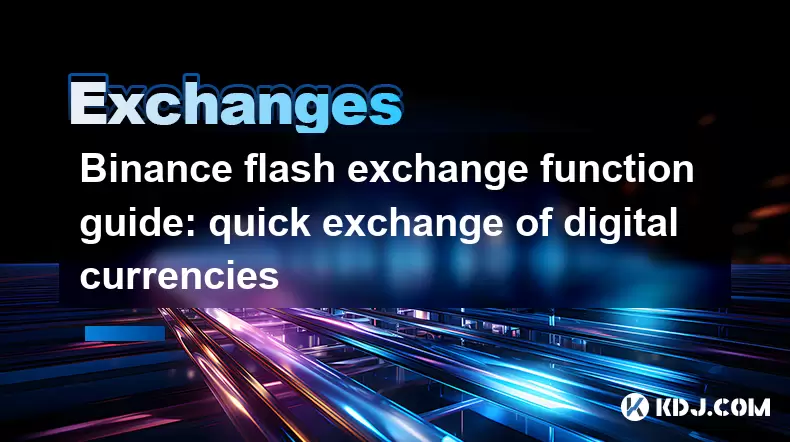
Binance flash exchange function guide: quick exchange of digital currencies
Jun 23,2025 at 12:29pm
What is the Binance Flash Exchange Function?The Binance Flash Exchange function is a powerful tool designed to allow users to instantly swap between supported cryptocurrencies without the need for placing traditional buy/sell orders. This feature simplifies the trading process by offering a direct exchange mechanism, eliminating the requirement to conve...

Binance spot market analysis: seize the best time to buy and sell
Jun 19,2025 at 04:56pm
Understanding the Binance Spot MarketThe Binance spot market is one of the most popular platforms for cryptocurrency trading globally. It allows users to trade digital assets at current market prices, making it essential for traders aiming to buy low and sell high. Unlike futures or margin trading, spot trading involves direct ownership of the asset aft...

Binance fund management secrets: reasonable allocation to increase income
Jun 22,2025 at 02:29pm
Understanding Binance Fund ManagementBinance fund management involves strategic allocation of your cryptocurrency assets to optimize returns while managing risk. The key to successful fund management lies in understanding how different investment options on the Binance platform can be utilized to create a diversified portfolio. This includes spot tradin...

Binance trading pair selection skills: find the best buying and selling combination
Jun 23,2025 at 02:49am
Understanding the Basics of Trading Pairs on BinanceBefore diving into trading pair selection skills, it's essential to understand what a trading pair is. On Binance, a trading pair refers to two cryptocurrencies that can be traded against each other. For example, BTC/USDT means Bitcoin is being traded against Tether. Each trading pair has its own liqui...

Binance new coin mining strategy: participate in Launchpool to earn income
Jun 23,2025 at 11:56am
What is Binance Launchpool and how does it work?Binance Launchpool is a feature introduced by the world’s largest cryptocurrency exchange, Binance, to allow users to earn new tokens through staking. This platform enables users to stake their existing cryptocurrencies (such as BNB, BUSD, or other supported assets) in exchange for newly launched tokens. T...

Binance financial management guide: ways to increase the value of idle assets
Jun 19,2025 at 11:22pm
Understanding Idle Assets in the Cryptocurrency SpaceIn the fast-paced world of cryptocurrency, idle assets refer to digital currencies that are not actively being used for trading, staking, or yield farming. Holding these funds in a wallet without utilizing them means missing out on potential growth opportunities. Binance, as one of the leading platfor...

Binance flash exchange function guide: quick exchange of digital currencies
Jun 23,2025 at 12:29pm
What is the Binance Flash Exchange Function?The Binance Flash Exchange function is a powerful tool designed to allow users to instantly swap between supported cryptocurrencies without the need for placing traditional buy/sell orders. This feature simplifies the trading process by offering a direct exchange mechanism, eliminating the requirement to conve...
See all articles

























































































